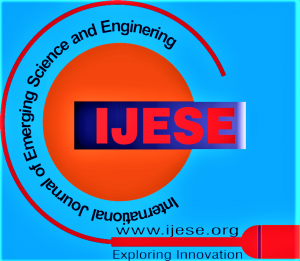![]()
Multiphysics Modelling of Timber-Concrete Composite Structures: A Meta-Analysis of Material Synergies, Coupled Phenomena, and Hybrid Structural Solutions
Girmay Mengesha Azanaw
Girmay Mengesha Azanaw, Lecturer, Department of Civil Engineering, Institute of Technology, University of Gondar, Gondar, Ethiopia.
Manuscript received on 25 April 2025 | First Revised Manuscript received on 04 May 2025 | Second Revised Manuscript received on 07 May 2025 | Manuscript Accepted on 15 May 2025 | Manuscript published on 30 May 2025 | PP: 26-31 | Volume-13 Issue-6, May 2025 | Retrieval Number: 100.1/ijese.G260513070625 | DOI: 10.35940/ijese.G2605.13060525
Open Access | Editorial and Publishing Policies | Cite | Zenodo | OJS | Indexing and Abstracting
© The Authors. Blue Eyes Intelligence Engineering and Sciences Publication (BEIESP). This is an open access article under the CC-BY-NC-ND license (http://creativecommons.org/licenses/by-nc-nd/4.0/)
Abstract: Timber-concrete composite (TCC) structures represent a promising hybrid solution for sustainable construction, combining the compressive strength of concrete with the tensile capacity and environmental benefits of timber. This meta-analysis critically investigates the multiphysics modelling approaches applied to TCC systems, emphasising coupling techniques that simulate the interaction of mechanical, thermal, moisture, and long-term rheological behaviours. Material synergies between timber and concrete are examined to assess their influence on stiffness, load-bearing capacity, vibration response, and long-term deformation. Despite significant advances, modelling challenges persist due to the heterogeneity of materials, interfacial behaviour at the composite joint and time-dependent effects such as creep and shrinkage under varying environmental conditions. The work highlights current gaps in capturing nonlinear coupled phenomena and limited validation against experimental benchmarks. Moreover, it highlights the need to integrate advanced constitutive models, high-fidelity simulation frameworks, and scalable numerical tools. Emerging trends such as data-driven modelling and AIassisted calibration are discussed as promising pathways to enhance predictive accuracy and reduce modelling complexity. The findings aim to inform future research directions towards more robust, realistic, and integrated multiphysics modelling strategies for TCC systems, contributing to the advancement of hybrid structural design and the broader adoption of sustainable building technologies.
Keywords: Timber-Concrete Composite, Multiphysics Modelling, Coupled Phenomena, Hybrid Structures, Interface Mechanics.
Scope of the Article: Civil Engineering and Applications
